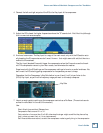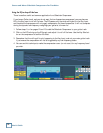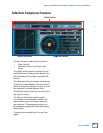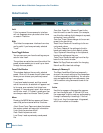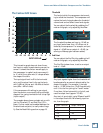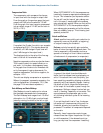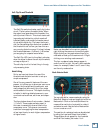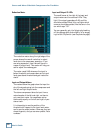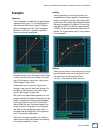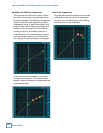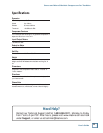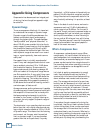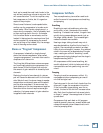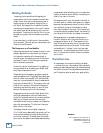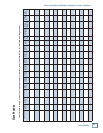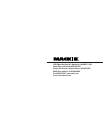
User’s Guide
24
Stereo and Mono Sidechain Compressors for Tracktion
Appendix: Using Compressors
Compression has become such an integral part
of mixing, that we thought an appendix might
be called for.
Dynamic Range
To use a compressor effectively, it’s important
to understand the concept of dynamic range.
Dynamic range is the difference between the
loudest and quietest signal levels passing
through the system chain. The span between
"barely audible" and "physical discomfort" is
about 120 dB, so we consider this to be the dy-
namic range of human hearing. Anything below
the threshold of hearing will be lost, as will
anything above the threshold of pain. But how
much dynamic range do we need in our record-
ings, or, more importantly, how much can we
really use?
Few people listen in a totally soundproofed
room. A very well-designed studio control room
has an ambient noise level 10 to 15 dB above
the threshold of hearing. Since we want to
keep ourselves safe from hearing damage, 95
dB or so is about all the dynamic range we can
use. But consider this: A very quiet living room
has an ambient noise level 25-30 dB above the
threshold of hearing. The inside of an automo-
bile at reasonable driving speed is upwards of
60 dB above the threshold of hearing, and with
a window open, all bets are off.
Average consumer audio systems aren’t capable
of producing painful sound pressure levels (with
the exception of those cars that cruise by with
the bass pumping loud enough to rattle the
windows in your house), a typical listening en-
vironment can only support a dynamic range of
65 to 75 dB.
The electronics in our recording chain are much
better than that, with digital recorders and ana-
log or digital consoles capable of 105 to 115 dB
of dynamic range. This means that the listening
environment, not the gear, sets the practical
limit on dynamic range. If you see a number
greater than that on a spec sheet, it’s purely
theoretical – a 24-bit system is theoretically ca-
pable of 144 dB of dynamic range but practical
things like electronic components stand in the
way of actually achieving it in practice, at least
today.
Even in the best of control rooms, we have to
squeeze as much as 115 dB of obtainable dy-
namic range into a 95 dB box. For the rest of
the world, though, we have to squeeze harder so
soft passages don’t get lost when your neighbor
starts up his lawnmower, or when listening to
the car radio at 65 miles per hour with the top
down. Therefore we can’t record all the dynamic
range that’s available if we expect people to
hear all the music we record.
What a Compressor does
A compressor reduces dynamic range. When
used properly, it’s hard to detect the action of a
good compressor, but a compressor can also be
used creatively as a sound shaping tool. A com-
pressor can be inserted into a single channel in
the recording chain when recording or mixing a
track, or compression can be applied to an en-
tire mix or sub-mix.
Let’s look at applying compression to a vocal
track. Hard consonants such as the letter ‘T’
create a high initial sound level before settling
down, whereas most vowels tend to be more
even. The average volume level of a word may
be fairly low, but because of an initial loud con-
sonant, we can only raise the word’s volume so
far before running out of headroom. If there’s
music playing under the voice, even when boost-
ing the vocal level as high as possible without
distorting the attack, a word (or a syllable) may
be far enough below the level of the music to
become lost or misunderstood.
If we reduce the gain momentarily during the
loud attack, then bring it back up when the dis-
tortion-risking blast is over, we can now boost
the average level of the word so that it can be
understood clearly over the music. What we’re
doing here is reducing the dynamic range of the
word, the difference between the loudest and
softest parts. By doing that, plus boosting the



